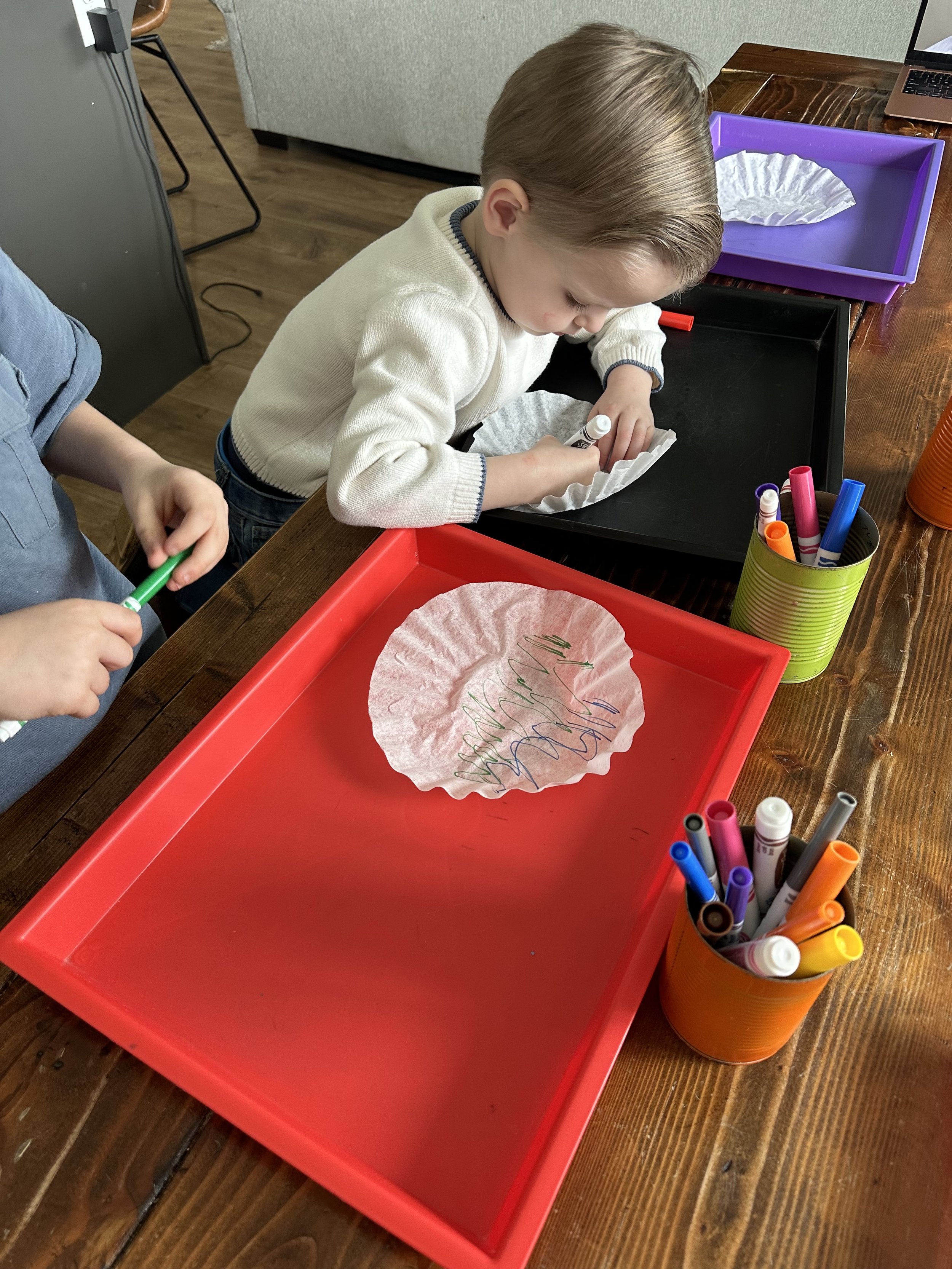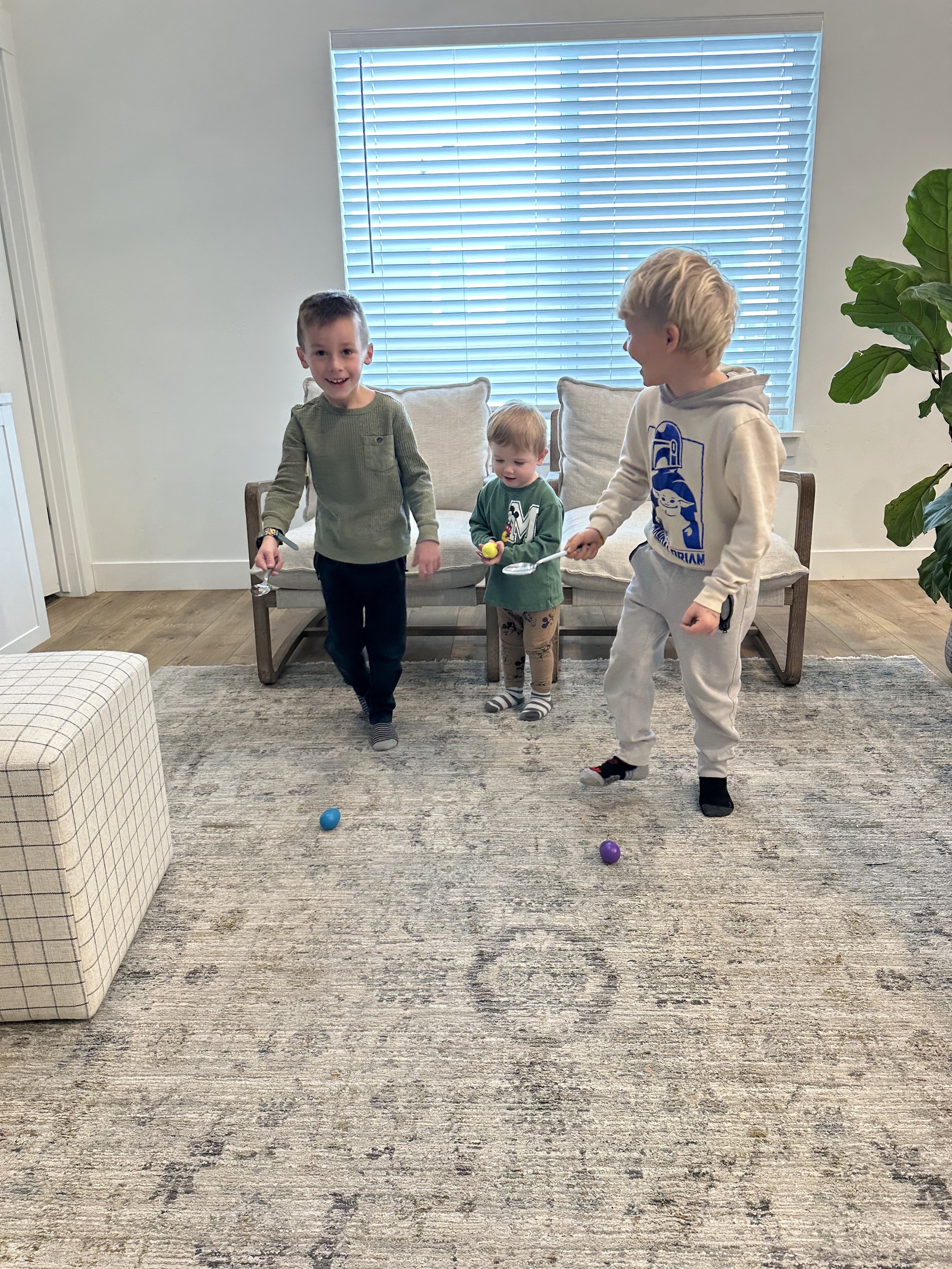Teaching the Whole Child in A Preschool Classroom
In the chaos of a preschool classroom, it's easy to get caught up in the whirlwind of lesson plans and daily routines. But what if we took a step back and looked at the bigger picture? What if we focused on teaching the whole child? That’s exactly what we try to do in each of our play-based classrooms at The Preschool Place!
Preschoolers are really ready to absorb everything around them. So preschool is not just about teaching letters and numbers; it's about fostering social skills, emotional intelligence, creativity, and physical development. Keep reading to see just a few of the ways we make sure we teach to the whole child in our classrooms!
Music and Movement
In preschool, music and movement are the keys that unlock the potential of the whole child. Beyond the obvious joy and laughter, music and movement engage every facet of a child's development. They stimulate cognitive functions, enhance memory and language skills, build motor skills and coordination, and cultivate emotional intelligence. We love incorporating music and movement into our preschool classrooms!
Child-Led Learning
When children take the reins of their own learning journey, they become active participants. This approach honors each child's unique interests, laying the groundwork for a lifelong love of learning. Child-led learning not only nurtures cognitive development but also hones social skills, as children collaborate and share their discoveries with peers. It is incredible fulfilling to watch children develop a true love of learning, and child-led learning is one way we ensure that happens in our classrooms.
Learning Through Play
Play is the language of childhood! Preschoolers absorb essential skills during playtime without even realizing they are actually learning. Whether it's building with blocks, playing pretend, or solving a puzzle, every game is a lesson waiting to unfold. Play nurtures cognitive development by enhancing problem-solving skills, spatial awareness, and creativity. It cultivates social skills as children negotiate roles and share ideas. This is our very favorite way to teach our little learners!
Sensory Learning
Engaging multiple senses simultaneously not only makes learning more memorable but also enhances cognitive development. Through sensory play, children refine fine and gross motor skills, develop spatial awareness, and lay the groundwork for later academic achievements. Sensory learning also fosters emotional regulation, providing a safe space for children to navigate their feelings and express themselves. Each of our classrooms has a sensory table, and we incorporate many sensory based activities into our lessons (like salt trays and play dough, just to name a few!)
One-on-One Instruction
In our preschool classrooms, we have daily one-on-on instruction with each child. This allows our teachers to tailr their approach and cater to the unique needs and pace of each child. This personalized attention allows for a deeper understanding of a child's strengths, challenges, and learning style. One-on-one instruction becomes a platform for cultivating a strong teacher-student bond, and creates trust and communication.
Social Interactions
In preschool, learning to play, share, and communicate is just as vital as learning the alphabet. We use table time, circle time, and playtime to practice teamwork, communication, and a wide variety of other social skills. These are the building blocks of success in their future education and relationships. Preschoolers are navigating a world of big emotions, and practicing expressing those emotions in a safe space is so important to teach the whole child!
The Whole Child
Teaching the whole child means recognizing and celebrating every individual’s strengths and interests. Some may excel in art, while others may thrive in academics or social situations. By tailoring our activities to cater to their diverse needs, we ensure that every child has the opportunity to shine.
We gear our curriculum and classroom to meet the many needs of the children we teach by offering a wide variety of unique learning experiences. Whether your child learns best through music and movement, sensory experiences, independently, or teacher-led, we do a little bit of it all!







One of our very favorite classroom projects are these giant cardboard letters. This idea came from Miss Morgan’s Classroom. You can find her Instagram post all about them on her account (@miss_morgan_).